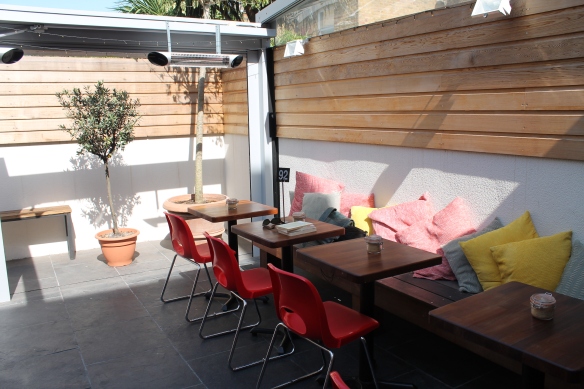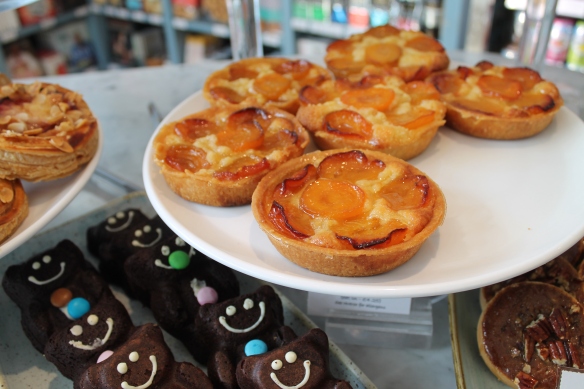
Gail’s baked goods are to die for. A relative newcomer to London, the bakery-restaurant has 32 locations scattered around the city. Their food and coffee can be summed up in one word: divine. I had breakfast regularly at the shop in the Fulham Road, either a cornbread muffin studded with feta and thyme and a ‘flat white’ coffee to go, or a sit-down to the most delicious bowl of creamy porridge generously drizzled with date syrup. Is it possible to swoon over a bowl of porridge? Yes, it is.



I love Fulham because it used to be my ‘hood. Eleven years ago I lived in SW6, the London borough of Hammersmith and Fulham. My turf was Fulham Road and the end of King’s Road (called New King’s Road). Below is a photo of the street I lived on, and a photo of the white house I lived in. It was my friend Maya’s house. She went to Kenya for a year and asked if I wanted to live in her house while she was away. I said yes. The timing was perfect because I was in-between jobs in Paris. 2005 was a great year. I worked as a temp in international law firms in Covent Garden and The City. I enrolled in a photography class at Central Saint Martins School of Art and Design. It was an evening class and I loved riding home on the night bus, the number 14, always sitting in the front seat on the upper deck. (the best way to see London, my friends, is from the top of a double-decker bus).
I hung out and had a laugh a minute with my friend Sherry. I whizzed back and forth to my apartment in Paris on the Eurostar. And I walked endlessly, exploring and discovering the diverse boroughs and neighborhoods of this extraordinary city.


When Maya’s parents emigrated from Poland in the early 1950s, they purchased this house for £1,000. In 2010, Maya sold it for £850,000. She became a rich woman overnight. But she barely had time to enjoy her newfound wealth because, sadly, she died of lung cancer two years later.
Here are some random photos of houses in the area. Each time I return to London I make a trip to Munster Road to walk by the white house, to say hello to no-one in particular, and to remember old times.



Another favorite breakfast or lunch spot is Local Hero located at 640 Fulham Road, SW6 5RT. As you can see, the weather was glorious when I was there. Out back there’s a private garden.



Bacon sandwich, eggs benedict, full English breakfast, porridge. You can’t get any of this in Paris!
I had just purchased three paperbacks from a charity shop for a pound apiece. Charity shops abound in London, there are several on Fulham and New King’s Road. I had the bacon sarny, my friend had the smashed avocado on toast topped with rocket, sumac and chilli.


stay tuned…more to come.
Otherwise known as a thrift store, charity shops raise around £300m a year for a range of causes in the U.K. They sell mainly used goods (clothes, books, household items) donated by members of the public.
Here’s the address of a lovely-looking B&B in this area. I haven’t been there myself, but the reviews are positive.
Homepage












































